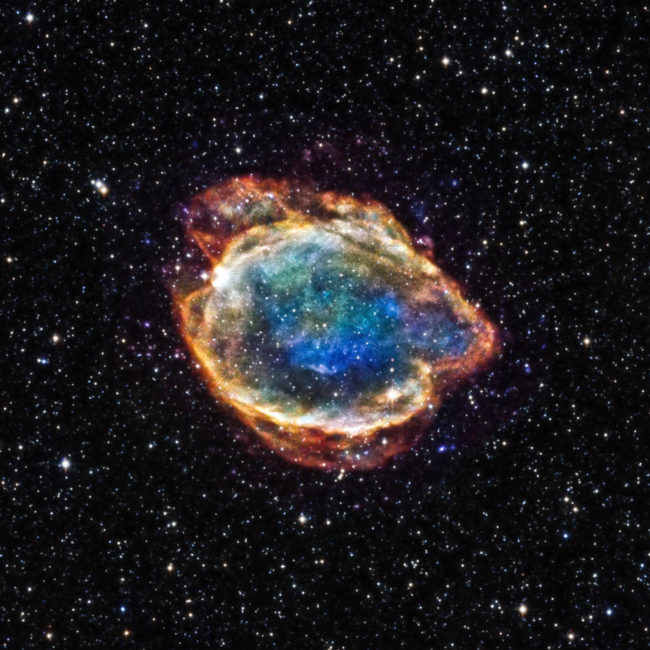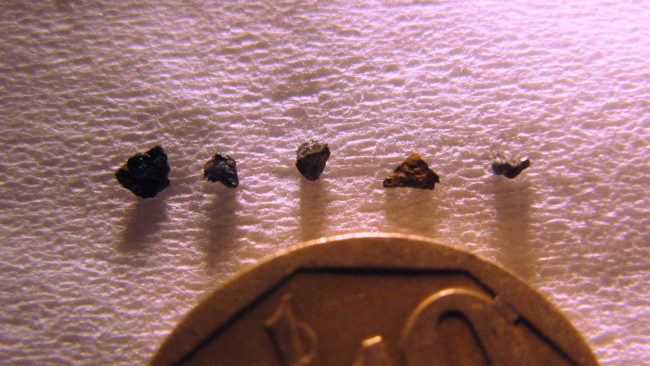
Further research into a distinctly unique rock that was found in Egypt back in 1996 has been throwing up a few deep astonishing surprises.
The stone itself has been named the Hypatia stone. After some very careful and detailed analysis by researchers at the University of Johannesburg the conclusion is this …
- This rock does not come from anywhere on our planet.
- It also does not come from anywhere inside our solar system.
- Now buckle up, because nor does it come from anywhere within our arm of the Galaxy.
So where does it come from?
The distinct composition of it very strongly points towards it coming from a type Ia Supernova.
What is a Type Ia Supernova?
A Type Ia supernova is a very rare and highly energetic event that totally obliterates the star it happens to. It occurs within binary star systems where one of the stars is a white dwarf and both stars are orbiting each other.
OK, but what is special about a White Dwarf that causes it to become a Type Ia Supernova?
Very briefly, a White Dwarf is a star that has burnt through all of it fuel and is dead and cooling, no fusion is taking place.
Slightly less briefly but still very simplistic, the typical Stellar lifecycle for a low or medium mass star works very roughly like this. The main sequence involves nuclear fusion consuming all the hydrogen by turning it first into deuterium and then helium. Once that fuel is exhausted, then it will expand into a red giant and the fusing of helium into carbon and oxygen commences. When the helium is all gone, it throws off its outer layers leaves behind the white dwarf.
All fusion has stopped, it is cooling off.
So what about the Type 1a supernova, how does that happen?
What happens is this. The White Dwarf in a binary system sucks in mass from the other star or perhaps even merges with it. When it has sufficient mass it can reach the ignition temperature for carbon fusion. This causes a runaway reaction, releasing enough energy to unbind the star in a supernova explosion.
Specific things are known …
- The critical mass at which a white dwarf will explode is fixed.
- Because of this these Type 1A supernova’s have a very consistent peak luminosity
Knowing the above is a very valuable and useful bit of information for astronomers. Because of this consistency in peak luminosity they are often called standard candles.
The value is this – Since we know what the brightness actually is, and we have an observed brightness that we see here on Earth, then we can use that difference to work out how far away it actually is.
Why is this Stone associated with a Type Ia Supernova?
Permit me to quote the actual paper …
Hypatia’s matrix 2 chemistry does not fit predictions for the average interstellar dust composition based on absorption spectroscopic studies of element depletions in gas along stellar lines of sight. Instead, it shows similarities to the nucleosynthesis yields of specific supernova Ia models, whereby the element abundance correlations and the strong depletion of Si may be understood as resulting from nuclear photodisintegration.
Huh!
Translation: This latest chemistry ‘forensics’ conducted by the University of Johannesburg (UJ) researchers indicates that the stone named Hypatia from the Egyptian desert could be the first tangible evidence found on Earth of a sone that was forged in the heart of the extremely rare supernova type Ia explosion.
“If this hypothesis is correct, the Hypatia stone would be the first tangible evidence on Earth of a supernova type Ia explosion. Perhaps equally important, it shows that an individual anomalous ‘parcel’ of dust from outer space could actually be incorporated in the solar nebula that our solar system was formed from, without being fully mixed in,”
Jan Kramers, Lead author of the research paper
A brief History of the analysis of the Hypatia Stone
In 2013, a study of the argon isotopes established that it had not formed on earth. It had to be extraterrestrial.
In 2015 a study of noble gases within the fragment granted the insight that it was not from any known type of meteorite or comet.
In 2018 the team published even further analyses. This included the discovery of a mineral, nickel phosphide. That has not previously been found within any object in our solar system.
To take it a step further they carefully selected 17 targets on the tiny sample that were well away from the earthly minerals that had formed in the cracks after its impact on earth. What they discovered was a consistent pattern of trace element abundances that is completely different that anything in the solar system, primitive or evolved. Not even objects in the asteroid belt or meteors matched.
What about interstellar dust from our arm of the Galaxy?
Nope, they checked, not a match.
Hey how about a Red Giant star, they are very common, could that be the answer?
Nope, too much iron, too little silicon and too low concentrations of heavy elements heavier than iron.
How about a Type II supernova, they cook up lots of iron?
Another Nope. Not only is that not a source for strange minerals like nickel phosphide, but there was also too much iron in Hypatia compared to silicon and calcium.
It was at this point that they considered the rarest of rare supernovas, a Type Ia. You only get one of two of those per galaxy per century. This is where all the iron in the universe comes from, they manufacture it. Supernova type Ia explosions create highly unusual element concentration patterns. This appeared to be the best possible match.
“All supernova Ia data and theoretical models show much higher proportions of iron compared to silicon and calcium than supernova II models”
“In this respect, the proton beam laboratory data on Hypatia fit to supernova Ia data and models.”
Jan Kramers, Lead author of the research paper
But wait, it’s not a perfect match.
In six of the 15 elements examined, proportions were between 10 and 100 times higher than the ranges predicted by theoretical models for supernovas of type 1A. These are the elements aluminium, phosphorus, chlorine, potassium, copper and zinc.
How is that possible?
One hypothesis is that the White Dwarf binary could have inherited that from a companion Red Giant star.
One Last Image
The sample they have been working with is tiny.

I’m simply astonished at the degree of insight that has been gained. It could have so easily been missed.
I do wonder what else is out there that we have missed.
One further point is this. It is not the end game, there is more to do. The paper has this note at the end …
Isotope analyses of the even-Z elements (carried out non-destructively in situ using SIMS) would be an important next step to test our interpretations and expand the perspective on heterogeneity of ISM dust and solar nebula formation that we can thus far only hint at.
In Summary
This is one more step, one further bit of insight, and also direct evidence of a Type Ia explosion, which is one of the most energetic events in the universe.
Step Back in Awe
What is perhaps one of the most significant scientific papers ever published is the 1957 B2FH paper.
Unless you are into astronomy or cosmology they it is highly probable that you will not have heard of this groundbreaking paper that radically altered our understanding of reality.
It is the paper that revealed the origin of the chemical elements. The proper title is Synthesis of the Elements in Stars, but it became known as B2FH from the initials of its authors: Margaret Burbidge, Geoffrey Burbidge, William A. Fowler, and Fred Hoyle.
All the heavy elements, everything, were forged in the heart of stars via Stellar nucleosynthesis.
You live and breath and think, because the fusion within a star created the heavy elements that you are composed of.
You exist because long ago a star died.
That is a deeply profound poetical insights.
Further Reading
- The paper that reveals these latest finding is available via Open Access – The chemistry of the extraterrestrial carbonaceous stone “Hypatia”: A perspective on dust heterogeneity in interstellar space
- Wikipedia – Type Ia Supernova
- Wikipedia – White Dwarf
- Wikipedia – Stellar Evolution
- Wikipedia – Stellar nucleosynthesis
